The liquid level in the tank is monitored by a float sensor. If the level falls below the mark «MIN», the brake fluid level warning light comes on in the instrument cluster.
USEFUL ADVICE: Brake fluid type - not lower than D0T-4. We recommend checking the level before each ride and topping up the reservoir if necessary. If you have to add brake fluid to the reservoir quite often, find (see «Checking the tightness of the hydraulic drive of the brake system») and troubleshoot (see sect. «Brake system»).
When changing the brake fluid in the system, remember or write down the brand of fluid that will be filled in so that when topping up, use the fluid of the same brand.
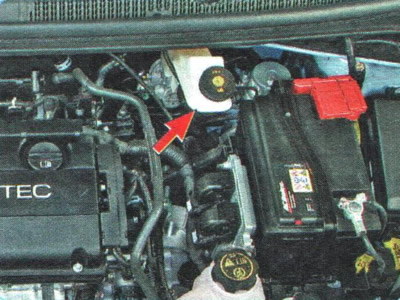
The reservoir is installed on the brake master cylinder on the left side of the engine compartment, near the bulkhead.
WARNING: Be careful when handling brake fluid, it is toxic.
USEFUL ADVICE: In order not to expose yourself to unforeseen expenses for the repair of the brake system, and even the entire car as a whole, in the future, replace the brake fluid with fresh one in a timely manner. It is very hygroscopic and absorbs moisture from the air, which, in addition to corroding parts of the brake system, lowers the boiling point of the fluid itself, and this can lead to brake failure during frequent heavy braking.
Do not reuse the fluid drained from the system: it is contaminated, saturated with air and moisture.
Contact of brake fluid on wires, plastic or painted body parts can cause damage, so always use clean rags when filling. If liquid comes into contact with these parts, wipe them off immediately with a clean rag.
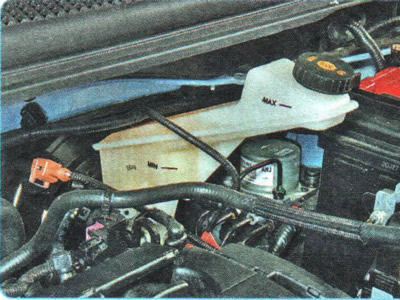
1. Check the brake fluid level in the reservoir. It must be between the marks «MIN» And «MAX», applied to the body of the tank.
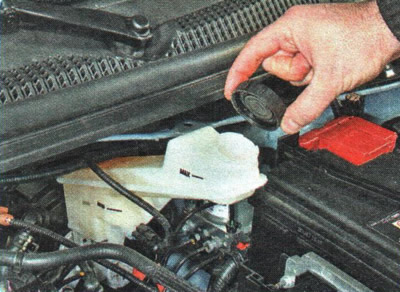
2. If the fluid level is below the mark «MIN», unscrew the tank cap and remove it.
WARNING: A gradual decrease in the brake fluid level without leaks most likely indicates the need to replace the brake pads. Check the condition of the brake pads (see «Checking the degree of wear of brake pads, discs and drums»). Late pad replacement leads to costly repairs (replacement of brake discs, calipers, brake drums)!
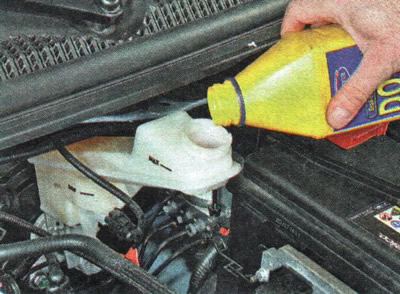
3. Add brake fluid to the mark «MAX».
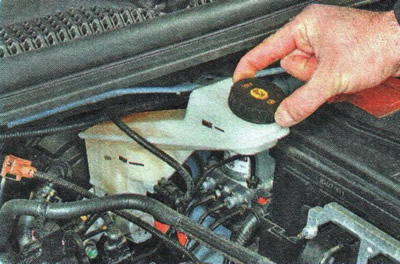
4. Wrap the tank cap, wipe the spilled liquid with a clean cloth.
